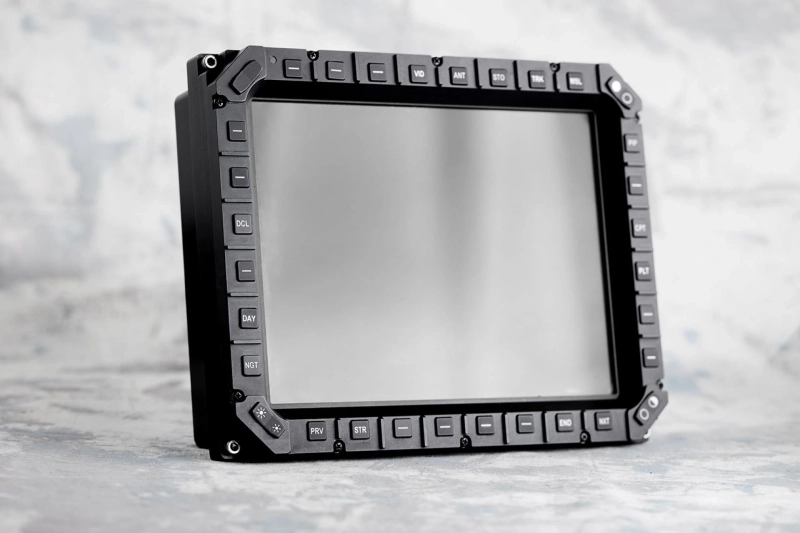The transformation of aviation interfaces through smart cockpit technology represents one of the most significant advances in aerospace human factors engineering. As aircraft systems become increasingly sophisticated, the integration of rugged touchscreen displays with intelligent cockpit architectures creates unprecedented opportunities for enhanced operational capability while maintaining the reliability standards essential for mission-critical environments.
Smart Cockpit Technology: Beyond Traditional Interfaces
Smart cockpit technology encompasses far more than digital displays replacing analog gauges. These systems integrate artificial intelligence, predictive analytics, and adaptive interfaces that respond to operational context, pilot workload, and mission requirements. Modern implementations utilize machine learning algorithms to optimize information presentation, reducing cognitive burden while enhancing situational awareness.
Contextual information management represents a key advancement in smart cockpit design, where rugged touchscreen displays present relevant data based on flight phase, environmental conditions, and mission parameters. During takeoff, displays emphasize engine parameters and flight control status, while cruise operations highlight navigation efficiency and system monitoring information.
Predictive maintenance integration allows smart cockpits to process real-time sensor data and present maintenance recommendations through intuitive touchscreen interfaces. This capability transforms maintenance planning from reactive to proactive, significantly improving operational readiness while reducing lifecycle costs.
Rugged Touchscreen Display Integration Challenges
Environmental durability remains paramount in aerospace applications, where rugged touchscreen displays must maintain precise touch sensitivity while operating in extreme temperatures, high vibration environments, and electromagnetic interference conditions. Traditional consumer touchscreen technologies cannot withstand the demanding conditions encountered in military and commercial aviation operations.
Glove compatibility presents unique engineering challenges for smart cockpit technology, as pilots frequently operate while wearing protective equipment. Rugged touchscreen displays must maintain accurate touch recognition through heavy gloves while preventing accidental activation during turbulence or high-G maneuvers.
Night vision goggle compatibility adds another layer of complexity to touchscreen integration in military applications. Smart cockpit technology must coordinate display brightness, color temperature, and interface elements to maintain NVG functionality while preserving touchscreen responsiveness and visual clarity.
Operational Advantages of Integrated Systems
Reduced pilot workload emerges as one of the most significant benefits of combining smart cockpit technology with rugged touchscreen displays. Intuitive gesture controls and adaptive interfaces minimize the time required to access critical information, allowing pilots to maintain focus on primary flight tasks during demanding operational scenarios.
Enhanced situational awareness results from intelligent information fusion presented through responsive touchscreen interfaces. Smart cockpit technology can correlate data from multiple sensors and present synthesized information through interactive displays that allow pilots to drill down into specific details as needed.
Mission flexibility increases dramatically when rugged touchscreen displays can be rapidly reconfigured for different operational requirements. Military platforms benefit from displays that can switch between air-to-air combat modes, ground attack configurations, and surveillance operations through software-defined interfaces.
Technical Implementation Considerations
Processing architecture plays a crucial role in successful integration of smart cockpit technology with rugged touchscreen displays. Modern systems require powerful embedded computing platforms capable of real-time data processing while maintaining deterministic response times for safety-critical functions.
Interface standardization becomes essential when integrating multiple rugged touchscreen displays within comprehensive smart cockpit technology implementations. Standardized protocols ensure consistent user experiences across different display types while simplifying training requirements and reducing operational complexity.
Cybersecurity protocols must be embedded throughout the integration of smart cockpit technology and rugged touchscreen displays. As cockpits become increasingly connected, protection against cyber threats requires secure communication protocols and tamper-resistant hardware implementations.
Industry Implementation Trends
Leading aerospace manufacturers are increasingly adopting integrated approaches that combine smart cockpit technology with rugged touchscreen displays to create competitive advantages in both military and commercial markets. These implementations require partnerships with specialized manufacturers who understand both the technical requirements and certification challenges.
Tier-1 system integrators recognize that successful smart cockpit technology deployment depends on selecting rugged touchscreen display partners with proven experience in mission-critical applications. Companies like Aeromaoz provide the engineering expertise and manufacturing capabilities required for complex integration projects, ensuring that smart cockpit implementations meet performance requirements while maintaining certification compliance.
Platform modernization programs increasingly leverage the synergy between smart cockpit technology and rugged touchscreen displays to extend platform lifecycles while improving operational capability. This approach enables existing aircraft to incorporate advanced capabilities without complete cockpit replacement, providing cost-effective upgrade pathways.
The successful integration of smart cockpit technology with rugged touchscreen displays requires careful attention to human factors, environmental requirements, and operational demands while maintaining the uncompromising reliability standards that define aerospace excellence.
Read More: Advanced Night Vision Compatible Cockpit Displays for Tactical Operations

